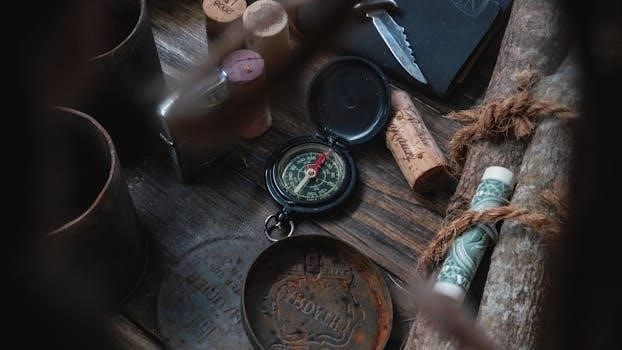Setting Up a Planted Aquarium⁚ A Comprehensive Guide
This in-depth guide to setting up a planted aquarium is focused on the first-time fishkeeper․ It will cover everything from picking the right tank, to selecting the perfect fish and everything in between․ Successful aquariums start with proper research․ This comprehensive guide and tutorial is just what you need․
Step 1⁚ Choosing the Right Tank
The most obvious piece of equipment you need is an aquarium․ The factors that matter most when selecting an aquarium are size, shape, and clarity․ Size⁚ The bigger the tank the better, especially if you plan on keeping fish․ Consider the size of your space and how much room you have for a tank․ You’ll also need to consider the size of the plants and fish you want to keep․ Shape⁚ There are many different shapes of aquariums available, such as rectangular, square, cylindrical, and even curved․ Choose a shape that fits your space and style; Clarity⁚ You’ll want an aquarium made of clear glass or acrylic so you can enjoy the beauty of your plants and fish․ Avoid aquariums with scratches or other imperfections․
Once you’ve chosen a tank, it’s important to make sure it’s properly set up․ This includes finding a level surface to place the tank on, and making sure the tank is properly sealed․ You’ll also need to choose the right filtration system for your tank, and make sure it’s working properly․ You can also consider purchasing a stand for your tank to elevate it and make it easier to access․
Step 2⁚ Setting Up the Substrate
For planted aquariums, it is recommended that you first place a soil-based substrate that will provide nutrients to the plants․ Start by adding a 1-inch layer of this substrate to the tank and spread it across the tank evenly․ Then add a 1-inch gravel layer on top, to prevent the soil from mixing with the water․ This will help to create a stable environment for your plants and prevent them from being uprooted by the water flow․ There are many different types of substrates available, so it’s important to choose one that is appropriate for the plants you want to keep․
When choosing a substrate, consider the size of the particles, the nutrient content, and the pH level․ It’s also important to rinse the substrate thoroughly before adding it to the tank to remove any dust or dirt․ If you are using a soil-based substrate, you may want to consider adding a layer of gravel on top to help prevent the soil from mixing with the water and clouding the tank․ This will also help to create a more natural-looking environment for your plants and fish․
Step 3⁚ Adding Plants
Once you have set up your substrate, it’s time to add your plants․ Start by selecting plants that are appropriate for the size of your tank and the lighting conditions․ It’s also important to choose plants that are compatible with the fish you plan to keep․ There are many different types of plants available, so you can easily find ones that will complement your tank’s design․ Before adding your plants to the tank, it’s a good idea to quarantine them for a few days to remove any pests or diseases․ This can be done by placing the plants in a separate container with clean water․
Once you’ve quarantined your plants, you can carefully add them to the tank․ Start by planting the larger plants first, then fill in the gaps with smaller plants․ You can use tweezers or a planting tool to help you place the plants in the substrate․ Be sure to leave enough space between the plants for them to grow and for the fish to swim freely․ When planting your plants, you can consider using a planting tool or tweezers to help you place them in the substrate․ Remember to leave enough space between the plants for them to grow and for your fish to swim freely․
Step 4⁚ Selecting and Introducing Fish
Choosing the right fish for your planted aquarium is crucial for a harmonious ecosystem․ Consider the size of your tank, the lighting conditions, and the plants you’ve chosen․ Select fish that are compatible with each other and with the plants in your tank․ For example, some fish might nibble on plants, while others might be too large for a small tank․ Research the specific needs of each fish species, including their ideal water parameters, diet, and temperament․
When introducing fish to your planted aquarium, do it gradually․ Acclimate them to the new environment by floating the bag containing the fish in the tank for 15-20 minutes, allowing the water temperatures to equalize․ Then, slowly add some tank water to the bag over the course of an hour․ Once the fish have acclimated, you can release them into the tank․ It’s important to monitor your fish closely after introducing them to ensure they are healthy and adjusting well to their new surroundings․
Step 5⁚ Maintaining Your Planted Aquarium
Maintaining your planted aquarium is essential for the health and well-being of your fish and plants․ Regular water changes are crucial, typically 10-20% of the tank volume per week, to remove waste products and maintain optimal water quality․ You’ll need to monitor water parameters such as pH, ammonia, nitrite, and nitrate levels․ Use a test kit to ensure these levels remain within the acceptable range for your fish and plants․ Regularly trim your plants to prevent them from becoming overgrown and to encourage new growth․
Maintaining a healthy balance of nutrients is vital for your plants to thrive․ You can supplement their nutrition with liquid fertilizers or root tabs․ However, be cautious not to over-fertilize, as this can lead to algae growth․ Keep an eye on your tank for any signs of algae outbreaks and address them promptly by reducing lighting duration, increasing water changes, or introducing algae-eating fish․ With proper care and attention, your planted aquarium will be a beautiful and rewarding addition to your home․

Essential Elements of a Planted Tank
A planted tank requires specific elements to create a thriving environment for your fish and plants․
Lighting
Lighting is crucial for the success of your planted aquarium, as it provides the energy for photosynthesis, the process by which plants convert light into energy․ The right lighting will encourage healthy plant growth while discouraging algae blooms․ When selecting lighting, consider the type of plants you’ll be keeping, as different species have varying light requirements․ For example, low-light plants like Java Fern and Anubias can thrive with minimal lighting, while high-light plants like Rotala and Ludwigia need intense lighting․ The intensity and duration of the light are key factors․ Most planted aquariums benefit from a light cycle of 10-12 hours per day, mimicking natural sunlight․ The intensity of the light is measured in watts per gallon (WPG)․ A general guideline is 1-2 WPG for low-tech planted tanks and 2-4 WPG for high-tech planted tanks․ However, it’s important to research the specific light needs of your chosen plants and adjust the intensity accordingly․ It’s also crucial to select a light fixture that provides even light distribution throughout the tank, ensuring that all plants receive adequate illumination․ Consider investing in a timer to automate your lighting schedule, promoting consistent plant growth and limiting algae growth․
Filtration
Filtration is vital for maintaining a healthy and thriving planted aquarium․ It removes waste products, toxins, and excess nutrients from the water, creating a clean and stable environment for your fish and plants․ A good filtration system is essential for maintaining optimal water quality․ There are different types of filters available, including hang-on filters, canister filters, and internal filters․ The choice of filter depends on the size of your tank and the type of fish and plants you keep․ A well-sized filter will provide adequate water flow, ensuring proper circulation and distribution of oxygen throughout the tank․ A filter with multiple stages of filtration, including mechanical, chemical, and biological filtration, is recommended for a planted aquarium․ Mechanical filtration removes large particles, such as debris and fish waste․ Chemical filtration removes dissolved toxins and heavy metals, while biological filtration breaks down ammonia and nitrite, harmful substances produced by fish waste, into less harmful nitrates․ Regular maintenance of your filter is crucial․ Clean the filter media, such as sponges, according to the manufacturer’s instructions․ Ensure that the filter is running properly and efficiently, providing adequate water flow and maintaining a clean and healthy environment for your aquatic inhabitants․
Water Parameters
Maintaining stable water parameters is crucial for the health and well-being of your fish and plants in a planted aquarium․ Water parameters refer to the chemical composition of the water, including pH, hardness, temperature, ammonia, nitrite, and nitrate levels․ Each species of fish and plant has specific requirements for water parameters․ For planted aquariums, we recommend you use moderately soft water at a level between 6․5 and 7․8․ There are a number of different types of water you can choose from, and you’ll need to weigh the pros and cons of each․ Some waters will require you to re-add minerals back to your water prior to adding it to the aquarium․ Regular water testing is essential to monitor water parameters and ensure that they are within the acceptable range for your aquatic inhabitants․ Use a reliable water test kit to measure pH, hardness, ammonia, nitrite, and nitrate levels․ Adjust water parameters as needed using appropriate methods, such as adding water conditioners, adjusting the pH, or performing partial water changes․ Maintaining stable water parameters is essential for a thriving planted aquarium․ By monitoring and adjusting water parameters regularly, you can create a healthy and balanced environment for your fish and plants to flourish․

Tips for Success
Creating a thriving planted aquarium is a rewarding experience, but it requires careful planning and attention to detail․
Plant Selection
Choosing the right plants for your planted aquarium is crucial for its success and aesthetic appeal․ Consider the following factors when selecting plants⁚
- Light Requirements⁚ Different plants have varying light needs․ If your tank has low light, choose plants like Anubias, Java Fern, and Cryptocoryne․ For high-light tanks, you can explore options like Rotala, Ludwigia, and Hygrophila․
- Growth Rate⁚ Fast-growing plants can help control algae and provide cover for fish, but they require more frequent trimming․ Slow-growing plants offer a more stable and less demanding setup․
- Size and Shape⁚ Choose plants that complement the size and shape of your tank․ Tall plants can create depth, while low-growing plants provide a lush carpet effect․
- Compatibility⁚ Ensure that the plants you choose are compatible with the fish you plan to keep․ Some plants are toxic to fish, while others can be easily nibbled on by herbivores․
- Availability⁚ Check the availability of plants in your local area or online․ It’s often helpful to start with a few easy-to-care-for plants and gradually introduce more challenging ones․
Remember, diversity is key! A variety of plant species adds visual interest and creates a more balanced ecosystem․
Aquascaping
Aquascaping is the art of arranging and designing the elements within your planted aquarium to create a visually appealing and harmonious underwater landscape․ Here’s a breakdown of key considerations for successful aquascaping⁚
- Hardscape⁚ This refers to the non-living elements like rocks, driftwood, and other structures․ Choose materials that are safe for your fish and plants, and that complement the overall design of your tank․
- Substrate⁚ The substrate provides nutrients for your plants․ Choose a substrate that’s appropriate for the types of plants you’ve selected and that will create a visually appealing base for your aquascape․
- Contrast⁚ Create visual interest by using elements of contrast in your design․ This could involve varying sizes, shapes, colors, and textures of plants, rocks, and driftwood․
- Depth and Perspective⁚ Utilize different plant heights and arrangements to create depth and perspective․ Tall plants in the background can provide a sense of distance, while shorter plants in the foreground add visual interest․
- Balance and Flow⁚ Aim for a balanced and flowing design that is pleasing to the eye․ Avoid creating a cluttered or overcrowded look․
Remember, there are no strict rules for aquascaping․ Let your creativity guide you, and don’t be afraid to experiment with different arrangements until you achieve a design that you love․



